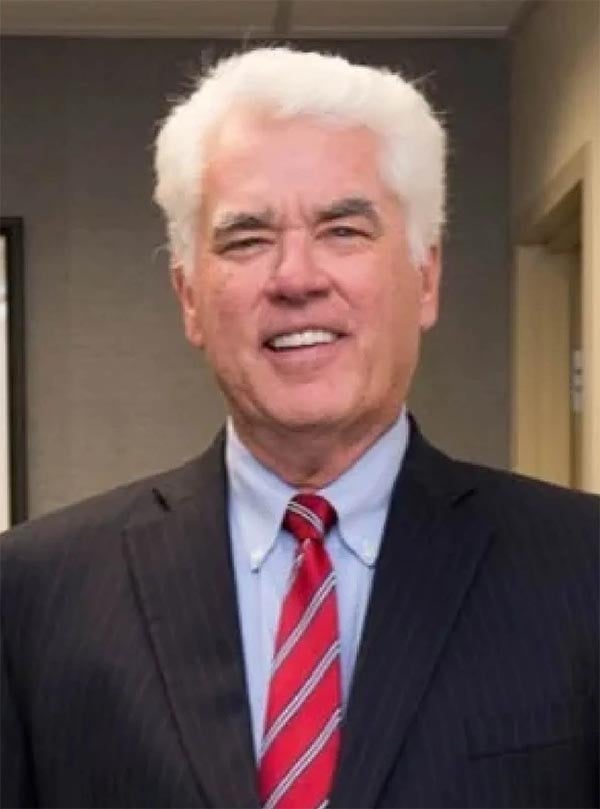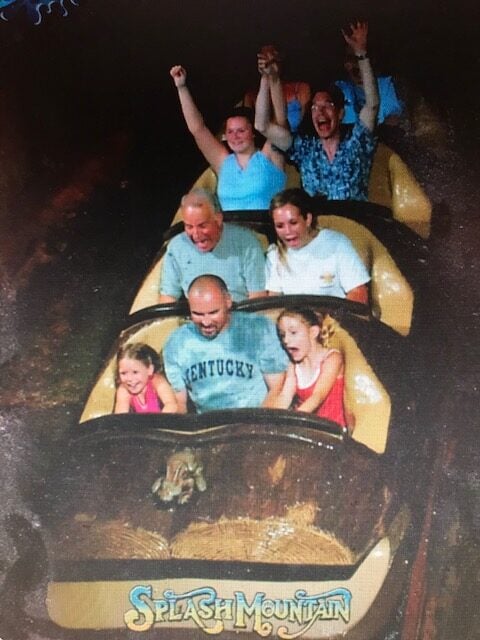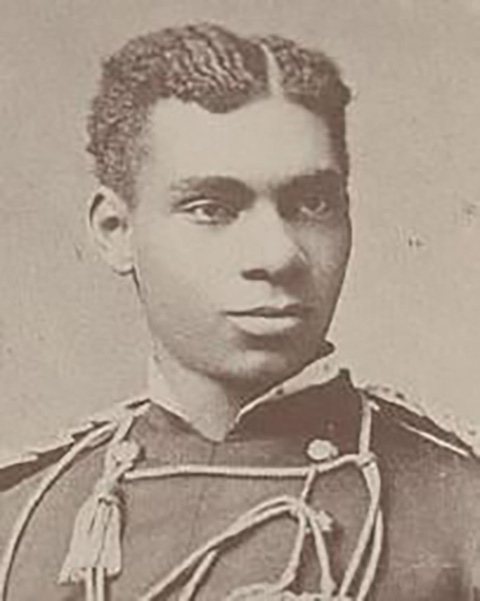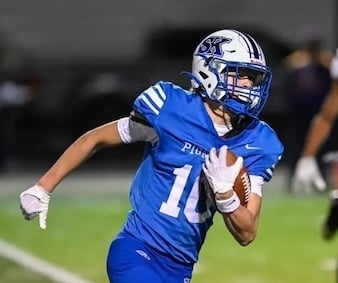By Mark Hansel
NKyTribune managing editor
The man whose 911 call and presence at the scene of a fatal crash is expected to be a crucial part of the defense strategy of attorneys representing Daniel Greis took the stand Thursday.

Jesse Phillips was questioned about his interaction with Greis as the two traveled on Staffordsburg Road in Southern Kenton County in October, just moments before a crash that killed five people.
Greis was traveling on the wrong side of the road in his Honda Pilot at an estimated 86 miles per hour when he struck a Honda Accord driven by Rodney Pollitt, Jr. head-on. Pollitt, 26, his fiancé, Samantha Malohn, 27, and their three children, Halieann, 9, Brenden, 8, and Callie Pollitt, 6, were all pronounced dead at the scene.
Greis, 58, is charged with five counts of wanton murder.
The case is being heard in the Kenton County courtroom of Circuit Judge Patricia Summe.
Kenton Commonwealth’s Attorney Rob Sanders says Greis was under the influence of alcohol and marijuana and was impaired at the time of the crash. A blood alcohol test on Greis registered .089 and he had marijuana in his system at the time of the crash.
Greis admitted to drinking and smoking marijuana that day, but his attorney, Stacey Graus said it was road rage, not impairment, that caused the deaths of the Pollitts.
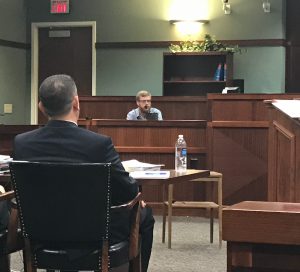
Phillips, who was driving in front of Greis before the defendant swung into the other lane as he crested a rise and struck the Pollitt car, described those last few moments before the crash.
He said Greis had already tried to pass him once before the fatal crash.
“Once I got to the stop sign, prior to the stop sign, there is also a sharp curve there (and) I had to hit my gas because I thought he was going to rear-end me coming to the stop sign,” Phillips said.
Phillips, who had his young daughter in the car, said Greis was “on his butt.” At one point, he said the defendant was so close, he couldn’t see his head lights or license plate.
Phillips called 911 immediately after the crash and described the scene to a dispatcher.
“When we hit the bump, he comes flying around me and he hit this car head-on,” Phillips said.
When asked about the condition of the occupants of the Pollitt vehicle, Phillips said, “They are done for.”
The area where Greis attempted to go around Phillips is a no-passing zone, with a speed limit of 55 miles per hour.
Graus pointed to contradictions in the testimony Phillips gave and the evidence presented by prosecution witnesses, as well as his own previous statements.
Phillips, for example, said that both Pollitt and Greis hit their brakes prior to the impact, but a device that recorded information in the five seconds leading up to the crash, indicates Greis never applied his brakes.
Phillips also stated he was slowing down before the accident, but Graus played a portion of the 911 call where Phillips said, “He tried passing me and I sped up because I didn’t want him to go around me.”
It’s not clear, however, which attempted pass Phillips was referring to.
Graus asked Phillips if he felt any responsibility for the accident, and he replied, “No.”

Faith Williams testified Thursday that Greis also passed her car and another vehicle in a no-passing zone at a high rate of speed, miles before he crashed into the Pollitt car. Williams said she recognized the vehicle when she came upon the crash scene.
The jury also heard from Sgt. Hunter Martin from the Kentucky State Police Critical Incident Response Team, who used 3D mapping technology to recreate the path the cars traveled on Staffordsburg Road.
Dr. William Ralston, the chief medical examiner for the Kentucky Justice and Public Safety Cabinet, described multiple blunt-force-trauma injuries to all of the victims in the Pollitt vehicle that caused, or contributed to, their deaths.
Dr. Gregory Davis, a forensic pathologist, described the effect of alcohol and marijuana on the system. He said that while visible symptoms vary from one person to another, the impact of alcohol and marijuana circulating in the blood will always have an effect on the central nervous system.
Davis also testified that based on back extrapolation, a widely accepted formula for determining blood alcohol content at the time of an incident, he concluded that, conservatively, Greis’s level was closer to .10 than .08 at the time of the crash.
The jury also heard from Rodney Pollitt Jr.’s mother Nancy Hoskins who told through tears how she learned of the death of her son, his fiancé and her grandchildren.
“The cops came knocking on my door at about 3:30 in the morning,” Hoskins said. “They asked me if I was Rodney Pollitt’s mother, and when I said (I was) they told me everything that had happened.”
Hoskins said that while she had heard about the accident on Staffordsburg Road, she did not know her family members were the victims.

After the jury was dismissed for the day, Greis who had remained stoic throughout the opening statements and two days of graphic, emotional, testimony, wept.
Judge Summe also heard several requests for evidence to be excluded after the jury was excused, which she said she would consider overnight and rule on this morning.
Graus also asked for a directed verdict of acquittal, claiming the prosecution had not provided sufficient evidence to prove its charges of wanton murder. Summe denied that motion.
The defense is expected to begin calling witnesses, including its own expert on the impact of alcohol and marijuana, as it relates to impairment, today.
Contact Mark Hansel at mark.hansel@nkytrib.com










